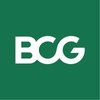


i
McKinsey & Company
Filter interviews by
McKinsey & Company Interview Questions, Process, and Tips
McKinsey & Company Interview Experiences
237 interviews found
I applied via Walk-in
Interview Questionnaire
1 Question
- Q1. Why is a new terminal at an airport required?
- Ans.
A new terminal at an airport is required to accommodate increasing passenger traffic and improve overall airport experience.
Current terminal may be overcrowded and unable to handle the volume of passengers
New terminal can provide additional gates, lounges, and amenities for passengers
Improved airport experience can attract more airlines and increase revenue
New terminal can also incorporate modern technology and sustain...
Interview Preparation Tips
Experience: LHR airport is building Terminal 5. Why? Identified the purpose of terminals, and its physical layout. Defined capacity as throughput of baggage (big mistake: capacity here was supposed to be that of airport with runways being the bottleneck!!). Compared capacity of T-5 with that of other terminals. Basically, T-5 is being built to accommodate the A380. I knew this from my GK but didn’t exactly shine through in the interview.
Identified it as an operations issue. After that everything went downhill. About halfway through the interview, I realized that I was dinged anyhow (I’d have rejected me had I been the interviewer), so there was less pressure and I had a relaxed time with the case after that.
Tips: Don’t neglect operations based cases. These were the least favorite ones of mine during prep. Even if interviewer is hostile, keep a cool head and think logically, don’t let the pressure get to you
Skills: Case Solving Ability, Case Analysis
College Name: Indian School Of Business (ISB)
Associate Interview Questions asked at other Companies
I was interviewed in Aug 2024.
Excel test
Logical Reasoning test
Quantitative aptitude test
An extensive case study for the corporate tax team that includes knowledge of US GAAP and transfer pricing.
(2 Questions)
- Q1. What are the fundamental accounting concepts, accounting entries, and the applicable tax rates for various services?
- Ans.
Fundamental accounting concepts, entries, and tax rates for various services.
Fundamental accounting concepts include accrual basis, matching principle, and consistency.
Accounting entries for services typically involve recognizing revenue and recording expenses.
Applicable tax rates vary depending on the type of service and the jurisdiction.
For example, consulting services may be subject to a different tax rate than soft
- Q2. What is your understanding of transfer pricing and its applicability?
- Ans.
Transfer pricing is the setting of prices for goods and services sold between related entities within a company.
Transfer pricing is used to determine the cost of goods and services transferred between different divisions or subsidiaries of a company.
It is important for multinational companies to establish transfer pricing to ensure fair pricing and compliance with tax regulations.
Transfer pricing can impact a company's...
(2 Questions)
- Q1. What is the amount of data you have managed in your previous roles?
- Ans.
I have managed large volumes of data in my previous roles, ranging from terabytes to petabytes.
Managed terabytes of data in previous roles
Handled petabytes of data in data analysis projects
Experience with data storage and retrieval systems
Utilized data management tools and techniques
Implemented data governance policies and procedures
- Q2. Which ERP software have you worked with?
- Ans.
I have worked with SAP ERP software extensively in my previous roles.
Extensive experience with SAP ERP software
Proficient in modules such as Finance, Supply Chain, and HR
Implemented custom solutions and integrations with SAP ERP
Trained team members on using SAP ERP effectively
(2 Questions)
- Q1. What are your salary expectations and how do you approach negotiations?
- Ans.
I approach negotiations by researching industry standards and emphasizing my value to the company.
Research industry standards for the position to determine a reasonable salary range.
Highlight your skills, experience, and achievements that make you a valuable asset to the company.
Be prepared to discuss and negotiate benefits and other perks in addition to salary.
Stay professional and respectful during negotiations to ma...
- Q2. What is your preferred joining date and the notice period required by your current organization?
- Ans.
My preferred joining date is in one month and my notice period is two weeks.
Preferred joining date: one month from now
Notice period required by current organization: two weeks
Flexible with joining date if needed
Interview Preparation Tips
Senior Analyst Interview Questions asked at other Companies
I applied via Referral and was interviewed in Oct 2024. There were 2 interview rounds.
The aptitude test was interesting, Had a bunch of fun puzzles
(2 Questions)
- Q1. Tell me about yourself
- Ans.
I am a detail-oriented business analyst with a strong background in data analysis and problem-solving.
Experienced in gathering and analyzing business requirements
Skilled in creating data models and visualizations
Proficient in using tools like SQL, Excel, and Tableau
Strong communication and presentation skills
Certified in business analysis (e.g. CBAP)
- Q2. Where do you see yourself in 5 years
Interview Preparation Tips
Top McKinsey & Company Business Analyst Interview Questions and Answers
Business Analyst Interview Questions asked at other Companies
(1 Question)
- Q1. Fit interview with PEI
Optimise social media marketing channels
Grow market share for a milk company
Interview Preparation Tips
Associate Interview Questions asked at other Companies
McKinsey & Company interview questions for popular designations
I applied via Campus Placement and was interviewed in Sep 2024. There were 3 interview rounds.
(1 Question)
- Q1. Food chain and case investigation
(1 Question)
- Q1. Basic qns about resume(focusing on skills like python ,sql,projects)
(1 Question)
- Q1. Case study or Guestimate
Get interview-ready with Top McKinsey & Company Interview Questions
I applied via Company Website and was interviewed in Aug 2024. There were 4 interview rounds.
(1 Question)
- Q1. Basic information about past experiences
(1 Question)
- Q1. This was round with the associate consultant
It was a case study round with the manager and about the CV
(1 Question)
- Q1. This round was with the associate partner. There was one small case study.
Analyst Interview Questions asked at other Companies
Jobs at McKinsey & Company
(2 Questions)
- Q1. Valuation and situation based question
- Q2. What will create most value- growth or margin. Based on GS matrix
- Ans.
According to the GE McKinsey Matrix, focusing on growth or margin depends on the specific business unit's position in the matrix.
In the GE McKinsey Matrix, businesses are categorized into four quadrants based on market attractiveness and competitive strength.
For businesses in the high market attractiveness, low competitive strength quadrant, focusing on growth may create more value by increasing market share and compet...
Analyst Interview Questions asked at other Companies
(2 Questions)
- Q1. What are doing in transport
- Ans.
I am responsible for managing the transportation operations, ensuring timely delivery of goods and maintaining vehicles.
Coordinating with drivers and scheduling routes
Ensuring vehicles are properly maintained and serviced
Tracking shipments and updating customers on delivery status
Managing transportation budget and expenses
- Q2. What abut your self
I am wording and smart working
Transport Incharge Interview Questions asked at other Companies
(4 Questions)
- Q1. Play 2 online games
- Q2. Then proceed to case study for both rounds
- Q3. Normal case study
- Q4. What is the number of football that can fit into wembley stadium
- Ans.
The number of footballs that can fit into Wembley Stadium depends on various factors.
The seating capacity of Wembley Stadium is approximately 90,000.
The size of a standard football is about 22 cm in diameter.
To calculate the number of footballs, we need to consider the available space and any obstructions.
Assuming no obstructions, we can estimate the number of footballs by dividing the available space by the volume of
(2 Questions)
- Q1. Personal fit questions
- Q2. Tell me about a time where you led a team
(2 Questions)
- Q1. Case study on ENERGY
- Q2. It was about introduction of a new type of energy
Top McKinsey & Company Business Analyst Interview Questions and Answers
Business Analyst Interview Questions asked at other Companies
(2 Questions)
- Q1. Tell me about yourself
- Ans.
Experienced HR professional with a passion for connecting top talent with great opportunities.
Over 5 years of experience in recruiting and talent acquisition
Strong communication and interpersonal skills
Proven track record of successfully filling positions in various industries
Passionate about helping individuals find their dream jobs
- Q2. Tell me about your role
- Ans.
I am responsible for managing a team of sales representatives and developing strategies to increase sales revenue.
Lead and motivate sales team
Develop sales strategies
Analyze sales data and trends
Collaborate with marketing team
Meet sales targets and goals
US Recruiter Interview Questions asked at other Companies
I applied via Campus Placement
Multiple choice questions
(1 Question)
- Q1. Personal interview questions
(1 Question)
- Q1. Was asked basics for the role
(1 Question)
- Q1. Compensation discussion
Business Presentation Specialist Interview Questions asked at other Companies
What people are saying about McKinsey & Company






McKinsey & Company Interview FAQs
Some of the top questions asked at the McKinsey & Company interview -
The duration of McKinsey & Company interview process can vary, but typically it takes about less than 2 weeks to complete.
Recently Viewed
Tell us how to improve this page.
McKinsey & Company Interviews By Designations
- McKinsey & Company Consultant Interview Questions
- McKinsey & Company Business Analyst Interview Questions
- McKinsey & Company Business Presentation Specialist Interview Questions
- McKinsey & Company Summer Intern Interview Questions
- McKinsey & Company Intern Interview Questions
- McKinsey & Company Junior Associate Interview Questions
- McKinsey & Company Associate Interview Questions
- McKinsey & Company Analyst Interview Questions
- Show more
Interview Questions for Popular Designations
McKinsey & Company Interview Process
based on 67 interviews
Interview experience
Interview Questions from Similar Companies
Fast track your campus placements
McKinsey & Company Reviews and Ratings
based on 615 reviews
Rating in categories
|
Business Presentation Specialist
566
salaries
| ₹0 L/yr - ₹0 L/yr |
|
Analyst
237
salaries
| ₹0 L/yr - ₹0 L/yr |
|
Associate
229
salaries
| ₹0 L/yr - ₹0 L/yr |
|
Consultant
194
salaries
| ₹0 L/yr - ₹0 L/yr |
|
Senior Business Presentation Specialist
190
salaries
| ₹0 L/yr - ₹0 L/yr |

BCG

Bain & Company

Deloitte

PwC
- Home >
- Interviews >
- McKinsey & Company Interview Questions


















